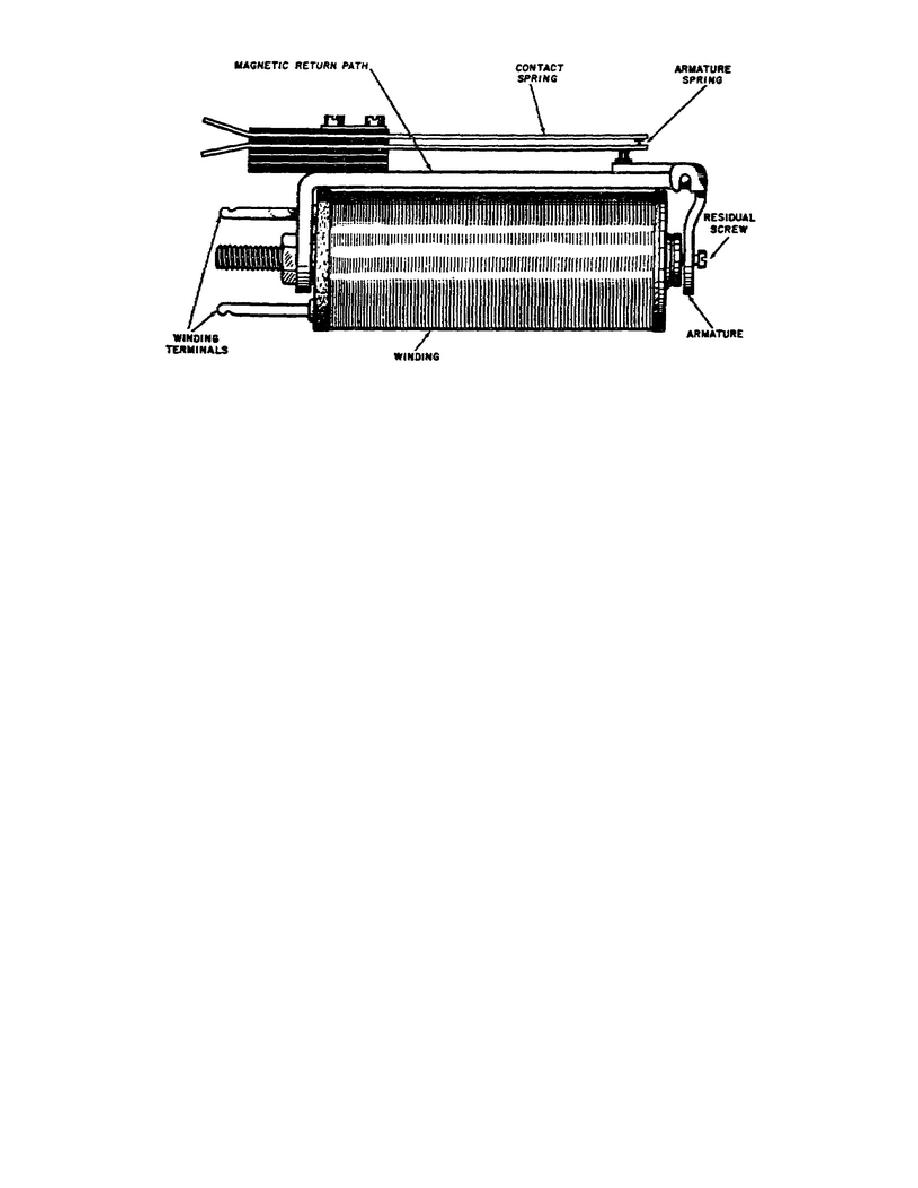
FIGURE 49. Structure of Typical
Telephone Relay
(4) In the armature of some relays (fig. 49) there is a small setscrew, called a residual screw. It is used to prevent
the armature from sticking to the core because of its residual magnetism, and can be adjusted for proper operation as
required.
(5) To protect them from mechanical injury, and also to keep out dust and dirt, relays usually are provided with
covers (not shown in the figure), often made of a nonmagnetic material so that they do not interfere with the operation of
the relays. Some newer types of relays are sealed hermetically in an atmosphere of dry, inert gas, such as neon or argon.
This protects them from the harmful effects of moisture, ice, fungi, acid, salt spray, and sand, and assures continuously
uniform performance under varying conditions. They are becoming popular in military applications of equipment,
especially for foreign service.
(6) Telephone relays are mounted at the rear of the switchboard, either singly or in groups, depending on their
particular function, or on the circuits with which they are associated. Relay covers may be designed to cover only one
relay or several relays of a group.
d. Operation of relays.
106



 Previous Page
Previous Page
